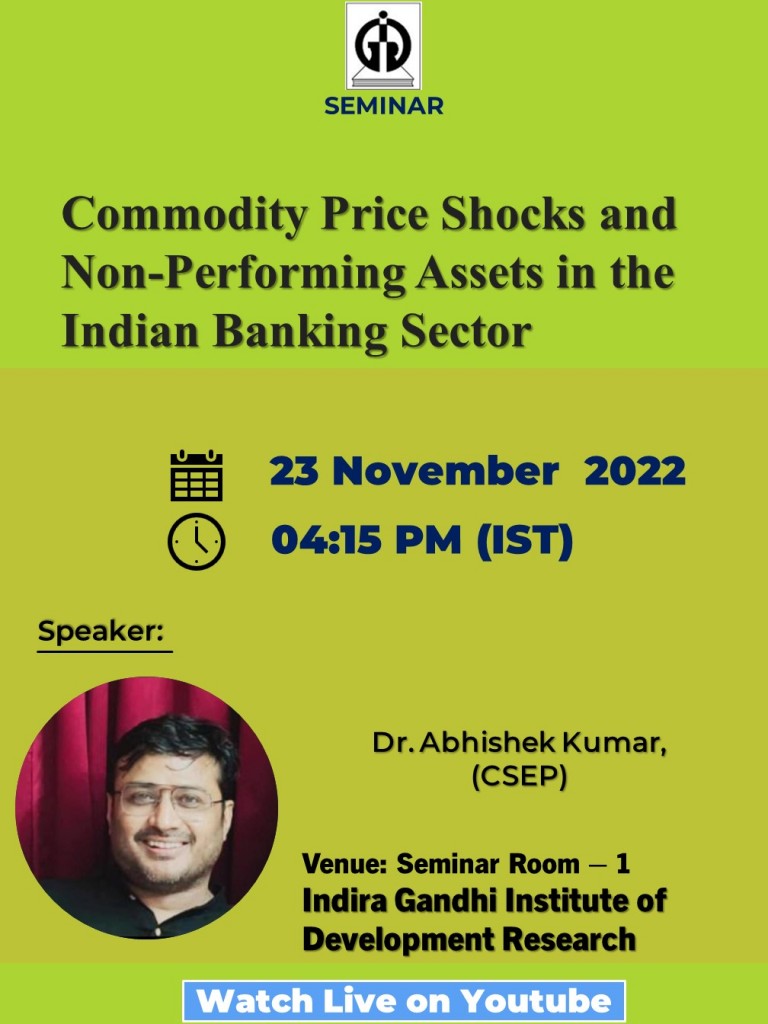Abstract:-
Non-performing assets in the Indian banking sector increased significantly in the 2010s, accompanied by a slowdown in credit and GDP growth rates. In this paper, we show that non-performing assets in the banking sector and profit ratios in commodity-sensitive non-financial sectors are highly correlated with global commodity prices. To estimate the effect of movement in commodity prices on non-performing assets, we create nominal price and inflation exposure indices for banks using novel data on banks’ sectoral exposure and commodity prices. These measures capture banks’ exposure to commodity prices through their borrowers’ profitability and cash flow and act as income shocks for banks. Results from a range of models suggest that a 1% decline in nominal exposure increases non-performing assets by 0.20-1.35% and these models explain ~30% of the increase in non-performing assets. Since public sector banks in general had higher exposure to commodity-sensitive sectors, they experienced a relatively higher decline in nominal exposure and a more significant rise in non-performing assets after the price crash of the 2010s. The increase in non-performing assets is followed by a decrease in credit growth. These results help us in understanding the origins of India’s twin balance sheet crises of the 2010s.


